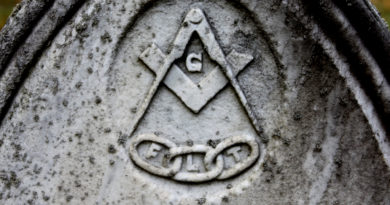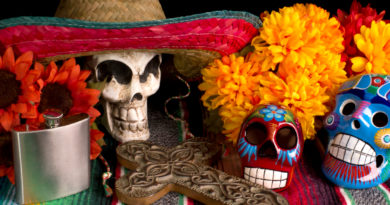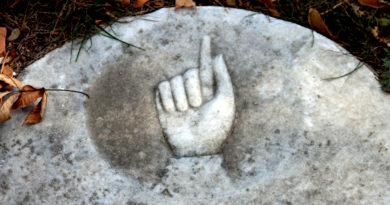What Does R.I.P. Actually Mean?

Photo © iStock.com/Esebene
We commonly see “R.I.P.” these days in obituaries, on social media and during Halloween, when these three letters appear on countless decorative tombstones, toys, candies and other holiday items. Yet, despite its familiarity, this term originally meant something far different than you might think. Here’s the meaning and origin of the acronym R.I.P. and why we use it on tombstones and gravemarkers.
The Meaning of “R.I.P.”
If asked today, most people would probably state that the acronym “R.I.P.” stands for “Rest in peace” and that it refers to the body/corpse of the deceased. After all, this is the commonly perceived English translation of the original Latin phrase requiescat in pace — which just happens to consist of three words, and all in the same order as the acronym R.I.P.
While the Latin word “pace” does derive from the Latin word for “peace” (pax), the term “requiescat” does not, in fact, mean “rest.” In the original Latin, it actually referred to a “prayer offered for the repose of the dead” that literally expressed: “May he [or she] begin to rest in peace.”
Moreover, unlike our modern body-centric interpretation of R.I.P., hoping the deceased would repose in peace after death originally referred to his or her soul, not their physical body. Numerous religious traditions, such as Christianity, Judaism and Islam, profess a belief in an afterlife, i.e., that death is not the end of human existence but, instead, that the soul survives the body in a different place and/or form, such as in heaven or hell, through reincarnation, or awaits resurrection.
Thus, the original Latin phrase “requiescat in pace” was actually the prayer itself, offered to a higher spiritual power, as an expression of hope that the deceased’s soul would find peace/comfort according to whatever religious/spiritual beliefs were relevant.
In other words, “requiescat in pace” or “R.I.P.” was not originally a secular statement that a deceased individual would now find peace in death (as used today) but, instead, actually served as an entreaty to God/a higher power that, in the survivor’s view/hope, the deceased’s soul deserved the peace and comfort afforded by the afterlife.
The History of “R.I.P.”
Before approximately A.D. 600-799, inscriptions and epitaphs on graves did not feature “requiescat in pace” or the acronym “R.I.P.,” despite an older existing religious concept “that the faithful were supposed to enter into a sleep of peace, that is to say into heaven as soon as they were dead.”
In the 1700s, however, and probably due to the use of the original Latin phrase “requiescat in pace” during Roman Catholic burial rites, both these words and their abbreviation started appearing on cemetery tombstones and monuments.
Over time, “requiescat in pace” and “R.I.P.” started to appear more frequently on gravestones as followers of other religious faiths adopted them. Gradually, influenced by religious, cultural and societal shifts, the original intent of these words as a prayer, and their connection to the soul rather than the body, was lost.
Sources:
“requiescat (n.)” Online Etymology Dictionary. Retrieved February 5, 2018. https://www.etymonline.com/word/requiescat
The Baltimore Literary and Religious Magazine, Volume 3, page 206, 1837. Retrieved February 5, 2018. https://books.google.com/books?id=xtQRAAAAYAAJ&pg







